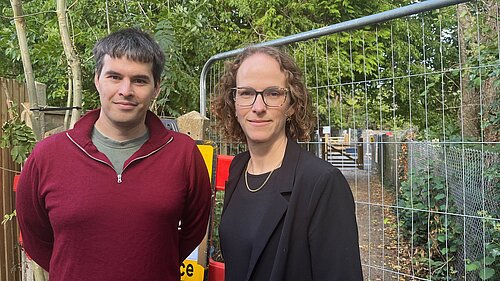Network Rail signals that it is on board with residents' concerns follow Lib Dem action

Following the recent announcement about changes to the One O’Clock Lane pedestrian rail crossing in Burgess Hill, Mid Sussex’s Liberal Democrat MP Alison Bennett and her colleague, Cllr David Eggleton (Liberal Democrat, Burgess Hill Franklands) have been raising residents’ concerns with Network Rail
Network Rail is carrying out improvement works at the pedestrian rail crossing on One O’Clock Lane in Burgess Hill. This involves the installation of Miniature Stop Lights (MSLs), which are small signals that show a red or green light, along with a warning sound, to let people know when it is safe to cross. According to Network Rail, this Burgess Hill crossing is the second most dangerous crossing of 200 across Sussex but these new lights and audio signal will improve the safety for pedestrians.
Alison Bennett and Cllr Eggleton were approached by residents who live near to the crossing, raising their concerns about the potential disruption that this siren would cause to them in their homes. Specifically, some people were worried about how loud the audio warning would be, and whether it would sound through the night as well as during the day.
In initial discussions with Network Rail on behalf of constituents, Alison Bennett and Cllr Eggleton were told that the default sound levels for the audio warning were 80db during the day, reducing down slightly to 70db at night (between 11pm and 7am). Alison requested a meeting with Network Rail representatives to discuss this further and share local resident’s worries with them.
Following this meeting request, Network Rail announced that they had managed to find a suitable, reduced volume level for the crossing to minimise the disruption to those living by the crossing, whilst ensuring the improved safety of the crossing. This has resulted in the signal being reduced 60db during the day (similar to normal conversation levels) and just 50db at night.
Speaking after her meeting with Network Rail, Alison Bennett MP said: “While we fully support the efforts of Network Rail to make our railways safer, Cllr Eggleton and I wanted to make sure that the concerns of residents nearest the railway line were heard. In my meeting with Network Rail, I sought clarification from them about the volume of the signal and whether this would be disruptive for local people.”
She continued: “David and I hope that the reduction in volume by Network Rail reassures residents that their concerns have been taken on board balancing the need to make the One O’Clock crossing safer, which we support, with ensuring minimal impact on local residents”
Cllr Eggleton added: “The proposed warning sound will be triggered up to 80 times a day, for 25 seconds at a time. While we are grateful to Network Rail for reducing the proposed sound levels, it is vital to monitor the noise levels once the upgrades are completed. Network Rail have reassured us that they intend to do this, but we will continue to keep a close eye on the crossing once the changes are implemented”
Network Rail have confirmed that they will continue to keep residents informed and will make sure that appropriate assessments are made of the noise level and any potentially significant disruption this may have on those who live nearest to the railway line once the safety improvements are implemented.